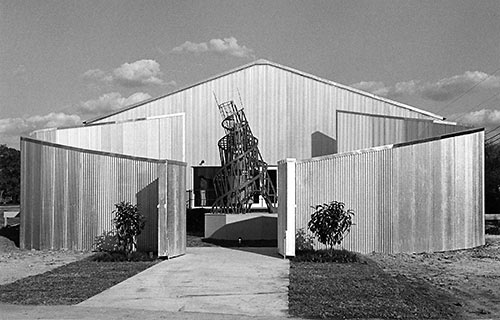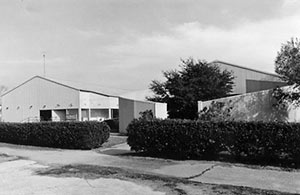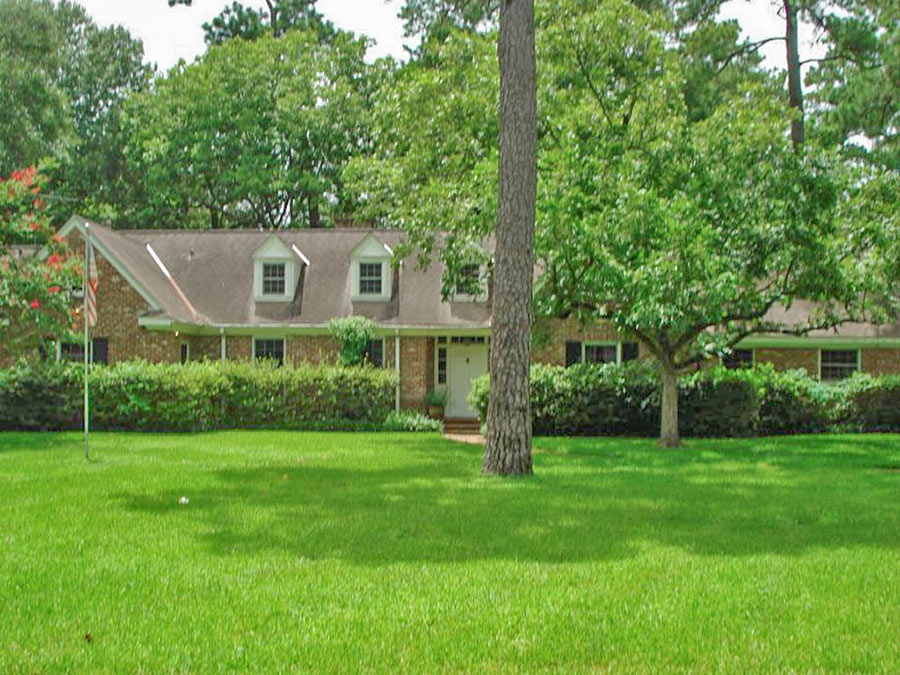

Online arts publication Glasstire is reporting that Rice University’s public-affairs office has confirmed plans to demolish the University’s most famous metal-sided structure. Known since the mid-1980s as the School of Continuing Studies Speros P. Martel Building, the southern half of the 45-year-old duo was dubbed the “Art Barn,” and was originally home to the Rice Museum, a predecessor to the Menil Collection.
John and Dominique de Menil paid for the construction of both corrugated buildings in 1969, and selected the architects, Howard Barnstone and Eugene Aubry. The structures were created to house Rice’s art and art history departments, along with the de Menils’ Institute for the Arts, which the couple moved from the University of St. Thomas after a dispute with that institution. The de Menils later left Rice to start their own little Menil Collection in Montrose. The simple, unassuming design of the structures they left behind became the inspiration and model for a series of “Tin Houses” —Â Galvalume-clad homes designed by Houston architects primarily in the West End and Rice Military area.
***
The Rice Media Center and the former Rice Museum are linked by a courtyard, a wooden deck, and a few connecting guy-wires. Earlier this year, the Glasscock School of Continuing Studies moved into new, more brickish digs across the driveway running to the university’s University Dr. entrance. The university has not announced plans to tear down the Media Center building, which includes the university’s movie theater and an art gallery.
But destruction of the former Art Barn appears imminent: “There are no details as to the specific date of its demolition,” writes Peter Lucas, “but a permit application has been filed, its utilities have been shut off, and a construction fence is going up [this] week.”
“The old structure made of corrugated galvanized sheet iron has held up well since it opened in 1969, but it is now in very poor condition,” the statement sent to Glasstire reads. “It was never intended to be a permanent building on the campus, and the cost to restore the structure for any possible use, and maintain it, is prohibitive. The university plans to plant grass on that site.” The giant oak tree that sits in front of the building, and which was planted by renowned international gardener Andy Warhol, will remain.
- The Art Barn’s Last Dance [Glasstire]
- What’s ahead for Houston art landmark? [Houston Chronicle]
- Raid the Archive: The de Menil Years at Rice [Rice University]
Photos: Rice University





Hooray!!! I’ve always loathed these hideous metal shacks. Rice has always respected Crams original Byzantine Mediterranean architecture for its campus, except for a few deviations–and this was one of those –I’m fully aware of the history of these awful buildings and no thankfully they’ll be thrown on the trash heap of awful architecture –I can’t wait to walk over and watch them bulldoze this little shop of horrors –
Thank Goodness RU is SAVING the Warhol oak tree!!!
I spent 4 years at Rice and never knew there was a tree there planted by Andy Warhol. And considering the proclivities of the undergraduate body, it’s probably for the best that this is not common knowledge.
Wasn’t Andy Warhol really an MIB agent named W?
I’m shocked Warhol was ever sober enough to plant anything–I guess when Mrs Menil asks you to plant a tree you just do it, I’m sure he thought he was planting a cocoa plant or some poppy.
What did UST do to piss off the de Menils?